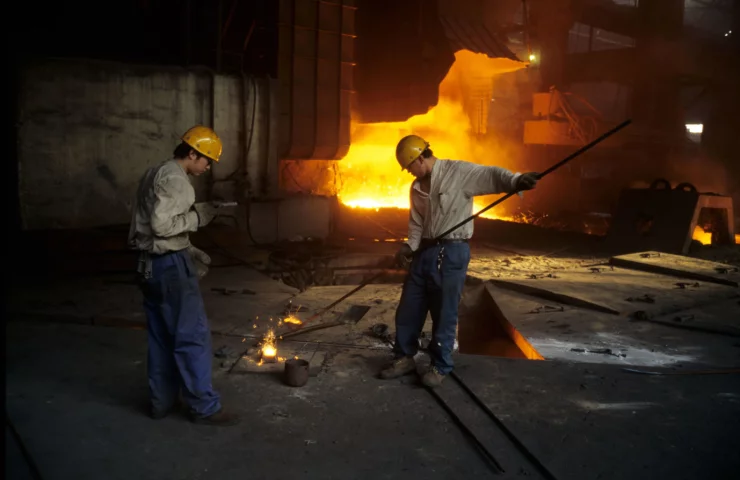Manufacturing activities in China's steel mills affect the global climate. After power generation, the steel sector is the second largest emitter in China, accounting for approximately 17% annually. China produces over half of the world's steel and over 60% of steel's carbon emissions.
Recent Chinese policy has set a number of quantified targets for steel decarburization, backed by several emission reduction measures. But this will not be enough to put the sector on track to limit global mean temperature increases to below 1.5°C.
The scale of the problem facing Chinese and global steelmakers is significant. A recent report by climate change think tank E3G and Pacific Northwest National Laboratory reveals the global and regional implications of a 1.5°C-compatible steel decarburization transformation path, showing that China's steel emissions need to be halved by 2030 to maintain this trend. However, the Chinese authorities recently pushed back the sector's emissions target, now aiming to peak emissions from steel production "by 2030" rather than 2025 as its industry association originally indicated in March 2021.
It is critical to accelerate the transition, and efforts by the Chinese steel industry to explore demand-side approaches, accelerate the transition to cleaner technologies, and participate in international initiatives need to be stepped up. It will also enable China to remain competitive in future green steel markets, participate in global efforts to set standards for industrial decarbonization, and become a leader in greening the global steel sector.
The current policy is moving in the right direction, but too slowly
According to our report, to achieve the 1.5°C-harmonized path, China's steel sector needs to peak emissions as soon as possible, cutting emissions by about half by 2030 and by 99% by 2050.
Thus, the latest forecasts for peak emissions in the sector until 2030 are far from perfect. By contrast, key steelmakers Baowu Steel, HBIS and Baotou Steel, which together account for 17% of China's total output, have set more ambitious targets. They aim to peak emissions well before 2025, cut emissions significantly by 2030, and achieve zero emissions by 2050.
These signals from the industry show that a faster transition is possible. The government should make full use of all available policy tools to advance an industry path with more ambitious goals, including demand-side leverage such as steel recycling and raw material efficiency improvements. It should also take steps to ramp up the replacement of existing steelmaking capacity with "clean zero-ready" technologies for production.
Using the full potential of leverage on the demand side
Demand-side leverage could play an important role in China's transition to steel production. Our report concludes that a combination of material efficiency measures, along with increased steel recycling, could halve emissions from the steel sector in 2050 compared to 2020 levels.
Instead of producing primary steel, scrap steel can be recycled to produce new steel in electric arc furnaces (EAFs), which do not require coking coal or iron ore as a raw material. Our modeling has shown that steel production from scrap metal in an EAF produces about 85% less emissions than conventional primary production in blast furnaces. By increasing scrap-based EAF production to 56%, China could cut steel emissions by 39% from 2020 levels by 2050.
Reforms Needed for China's "Deep Decarbonization"
Meanwhile, improved material efficiency could reduce global steel emissions by 21% by 2050. These include measures such as life extension, design optimization and subsequent recycling of metal-intensive products and buildings. In China, we found that material efficiency alone could lead to lower production levels, requiring 19% less steel production in 2050.
Unleashing the full potential of demand-side leverage will require concerted policy efforts to curb primary steel production, encourage recycling, improve scrap steel collection and sorting, and extend the life of steel-intensive assets. The government's recent "guiding opinion" for the sector showed progress in promoting increased recycling, setting a target to increase scrap steel use to 300 mil.




